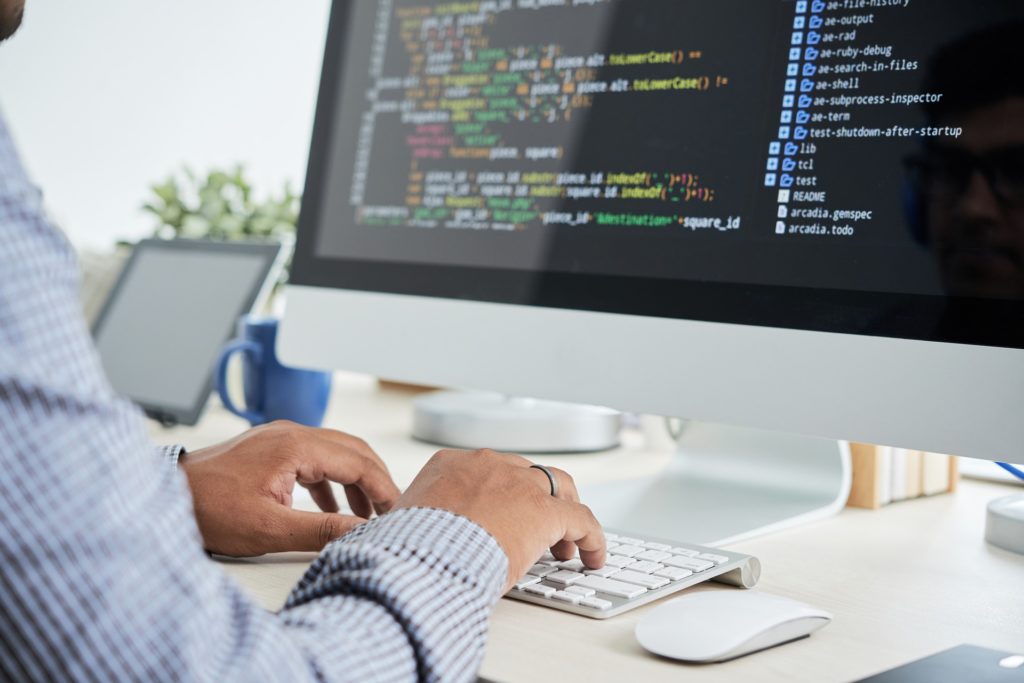Billions of people all around the globe access code every day. From the websites you read to the apps you use on your smartphones and tablets, coding languages make the world go \’round these days. Coding today is much different than it was ten years ago and will likely be much different in 10 years than it is now. Understanding how it has already evolved may help you see the changes it makes in the next ten years.
The Most Popular Coding Languages Have Changed
If you were to open the source code of a website in 2010, you would have seen a lot of Java, JavaScript, and PHP, not to mention traditional HTML. By 2015, Python overtook PHP as the third most used coding language, and it climbed even higher to become the number one coding language by 2019. What makes Python such a popular choice? It\’s user-friendly with an emphasis on readability. It\’s also an open-source language that is easy to integrate into various types of programs.
Artificial Intelligence Is the New Normal
Artificial intelligence is more common than ever before and is only expected to grow. As an increasing number of companies rely on machine learning to do everything from manufacturing parts to driving cars, programmers need to create bigger chips and increase neural network batch size on projects to maintain the AI\’s capabilities. Businesses in all industries rely on neural networks to learn more information and even communicate with customers. Consider whether you\’ve ever booked travel with a virtual agency or used automated financial investment strategies. Each of these relies on artificial intelligence. In fact, 91% of business owners say that their companies are much more technologically minded than in 2010.
Every Industry Is More Technological
Even businesses that aren\’t yet relying on artificial intelligence are still more technological than a decade ago or even a few years ago. Software programmers say that more than half of the companies they work for use 100 times more code now than they did in 2020, and a whopping 18% of them say the companies they work for use 500 times more code than they used to. This is likely because more companies are using applications than ever before. It used to be that apps were mainly either games or something in the technology industry. These days, you can use apps to order groceries, buy dinner, and even talk to your therapist. More apps mean the need for more coding and more coders.
Code Is More Accessible, and Easier To Learn
A little more than a decade ago, pre-written code was much harder to access. In the past, licenses were often under the GNU General Public License (GPL) and were much stricter than today\’s licensing requirements. This means that more code is open-source. Millions of pieces of written code that range from tiny snippets to complete programs are available for programmers to use in their applications and projects for little to no cost. In general, coding is also easier to learn from scratch. It used to be that people had to go to college or spend hours reading long, complicated tutorials. These days, there are applications available to help people learn to code, as well as a lot more easy-to-understand tutorials. It\’s also much easier to start projects as a hands-on way of learning to code.
There Is a Rise in Standardization and APIs
Coding is more standard than it used to be. A decade ago, businesses went out of their way to ensure their programs were incompatible with other external organizations, making it harder for the programmers, who had to write brand-new code every time they needed it to support a new platform. These days, application programming interfaces (APIs) are the norm, and they tend to use a core set of standards that make it easier and faster to write a program and integrate it with a range of platforms. However, it\’s important to note that APIs still pose security risks and have functionality issues at this time.
There Is a Demand for Coders
As the world becomes ever more technologically advanced, there will be a need for even more coders. The Bureau of Labor Statistics expects the need to grow as much as 22% over the next decade. It\’s a solid industry that keeps people excited and at the forefront of innovation.
- Using Technology to Boost Sales - June 27, 2024
- Why Your Startup Needs Insurance and How to Make It Affordable - June 3, 2024
- Feeling Marketing Burn Out? AI is the Answer - May 2, 2024




Pingback: How Coding Has Evolved Over the Years – TechSpective – Nommu
Pingback: How Coding Has Evolved Over the Years – TechSpective – Init0
Pingback: How Coding Has Evolved Over the Years - TechSpective - CodeCap
Pingback: Having difficulty finding developers? Try These 5 Suggestions
Pingback: Having difficulty finding developers? Try These 5 Suggestions – TechSpective – Pakistan News